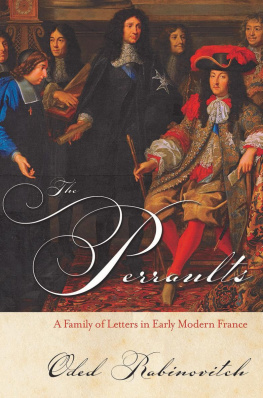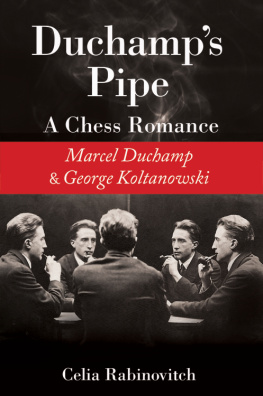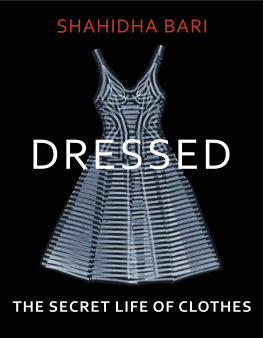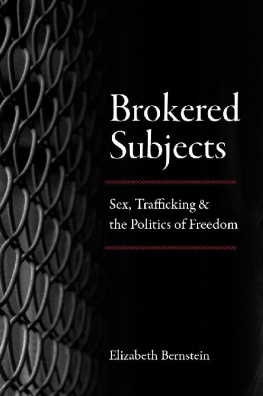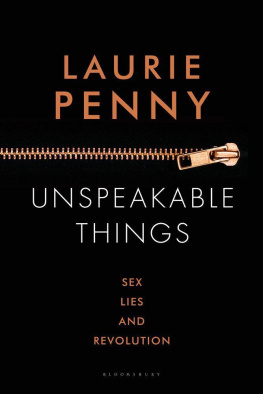2021 by Einav Rabinovitch-Fox
All rights reserved
Research funded, in part, under the auspices
of the Baker-Nord Center for the Humanities,
Case Western Reserve University
Library of Congress Cataloging-in-Publication Data
Names: Rabinovitch-Fox, Einav, 1981 author.
Title: Dressed for freedom : the fashionable politics of American feminism / Einav Rabinovitch-Fox.
Description: Urbana : University of Illinois Press, [2021] | Includes bibliographical references and index.
Identifiers: LCCN 2021010534 (print) | LCCN 2021010535 (ebook) | ISBN 9780252044014 (cloth ; alk. paper) | ISBN 9780252086069 (paperback ; alk. paper) | ISBN 9780252052941 (ebook)
Subjects: LCSH: Womens clothingPolitical aspectsUnited States. | FashionPolitical aspectsUnited States. | FeministsClothingUnited States. | FeminismUnited States.
Classification: LCC GT 605 . R 33 2021 (print) | LCC GT 605 (ebook) | DDC 391/.2dc23
LC record available at https://lccn.loc.gov/2021010534
LC ebook record available at https://lccn.loc.gov/2021010535
To Gal,
Adam and AlmaAcknowledgments
W riting a book is very much like making a garment. Although many people are involved in turning an idea or a sketch into a tangible piece of clothing, it is usually the designer who gets all the credit. Yet, one needs to take into consideration all the work that is being invested into making an outfit a success, whether by weavers who manufacture the fabric, the designer who draws the pattern, the sewers who construct the garment, as well as the consumer and the wearer who make the costume their own. Indeed, like books, clothes are the product of collaboration, inspiration, and yes, also long, tedious, and hard work.
This book began at New York University, where I was fortunate to find a stimulating community of scholars and colleagues. I am thankful for the advice and support I received from Michele Mitchell, Andrew Needham, Rebecca Karl, Molly Nolan, Daniel Walkowitz, and Jennifer Morgan, whose work was not only an inspiration but a model for rigorous history research. In particular, Linda Gordon, whose intellectual curiosity and acute advice helped me in charting my own path of inquiry and research, was an inspiration and a source of support to me and I cant thank her enough for that. I truly appreciate her encouragement to keep reworking and rethinking my arguments, as well as not to be afraid to take risks. Alice Kessler-Harris has been an incredible source of guidance and encouragement to me, both during my doctoral work and after my graduation, and I could never repay the kindness and generosity she showed me. Alices healthy skepticism pushed me to make my arguments stronger, clearer, and more nuanced, and to reformulate my jumbled ideas into eloquent prose. Her caring attention and invaluable advice have been a remarkable gift and for that I will always be grateful. I also want to thank Jennifer Scanlon, Carol Turbin, Tamar Carroll, Christine A. Kray, Barbara Winslow, Cori Field, Stacy Cordery, and Julie de Chantal for their advice and intellectual camaraderie.
I met wonderful people at NYU and beyond, and I am thankful for the moments we shared together. I am especially thankful to Cookie Woolner, Lauren Jae Gutterman, Bekah Friedman, Philippa Heatherington, Lana Povitz, Sarah Zarrow, Anelise Hanson Shrout, Beatrice Wayne, Laura J. Ping, Jonathan Michael Square, Rachel Kantrowitz, Yael Merkin, and Shayna Weiss, whose friendship and support I will always cherish. Academia is a much less lonely place because of you.
Dawn Durante believed in this manuscript from the beginning and saw its potential before I could even imagine it in a book form. I am very happy that I could have her as my editor at the University of Illinois Press, and am thankful for her continuous support, advice, and encouragement throughout the process. Dawn was a true advocate for this project, and I am sorry she could not see it come to an end, but Im thankful for Alison Syring Bassford, who did a wonderful job in filling Dawns big shoes. I am also grateful for my anonymous reviewers, whose thoughtful suggestions and comments helped make this book much stronger. The staff at the Press did a remarkable job in making this book a reality, and I especially want to thank Tad Ringo, Jennifer Fisher, and Deborah Oliver for all their work.
I was lucky to become the inaugural Wade Postdoctoral Fellow at the Western Reserve Historical Society, where I gained invaluable experience in museum work and access to a wonderful costume collection. Yet, the best thing was the chance to meet the fabulous Holly Witchey, Sean Martin, Margaret Burzynski-Bays, Dannielle Peck, and Patty Edmondson. I was even luckier when I joined the history department at Case Western Reserve University. There isnt really a better place I could have landed in. Kenneth Ledford has been a champion of my work and a wonderful supporter of my career, and I thank him for all that he has done for me in the department and beyond. I am also thankful for the friendship and intellectual community I found with Gillian Weiss, John Broich, Ananya Dasgupta, John Flores, Ted Steinberg, Jay Geller, David Hammack, Miriam Levin, Aviva Rothman, Daniel Cohen, Maddalena Rumor, and Noel Voltz. John Grabowski and Jonathan Sadowsky were very kind to read earlier versions of some of the chapters, and I am very grateful for their comments and friendship during my time at the department. One of the best things about this department is Renee Sentilles. Rene has been an incredible supporter of this project, reading multiple versions of multiple chapters. I am thankful for her smart advice and friendship, as well as her kindness and generosity. Peter Shulman, my third-floor comrade from across the hall, has been a tremendous help in turning the manuscript into a book. I am grateful for his advice, insights, conversations, and friendship. This book is far better written because of him. I also benefited from my students in the various reiterations of my Fashion and Power course, who helped me rethink some of the concepts and ideas that appear in this book.
I have benefited from the support of wonderful women and mentors I found through the Coordinating Council for Women in History (CCWH) and the Berks. Thanks to Sandra Dawson, Ilaria Scaglia, Jacqueline-Bethel Mougou, Rikki Bettinger, Kathy Feeley, Eileen Boris, Deirdre Cooper Owens, Liz Everton, Stephanie Richmond, and Jennie Brier for your friendship, wisdom, and encouragement. All of you showed me that the creation of a feminist community and network is not only possible but indispensable.
I was privileged to receive financial support for my research from various institutions and archives. I especially want to thank the Baker Nord Center of the Humanities at Case Western Reserve University, which provided crucial financial aid for this project at various stages. The Schlesinger Library at Harvard University, the Sophia Smith Collection at Smith College, the Hartman Center at Duke University, and Winterthur Library and Museum all offered generous grants that furthered my research. I also benefited from the generosity and knowledge of archivists, librarians, and staff. In particular I want to thank Emily Guthrie from Winterthur, Tal Nadan from the New York Public Library, Kenneth Chandler from the National Archives for Black Womens History, and Sara Hume from the Kent State University Museum for all their help. Thanks also to Bev Grant and the Dan Wynn Archive with their assistance in securing images for this book.




